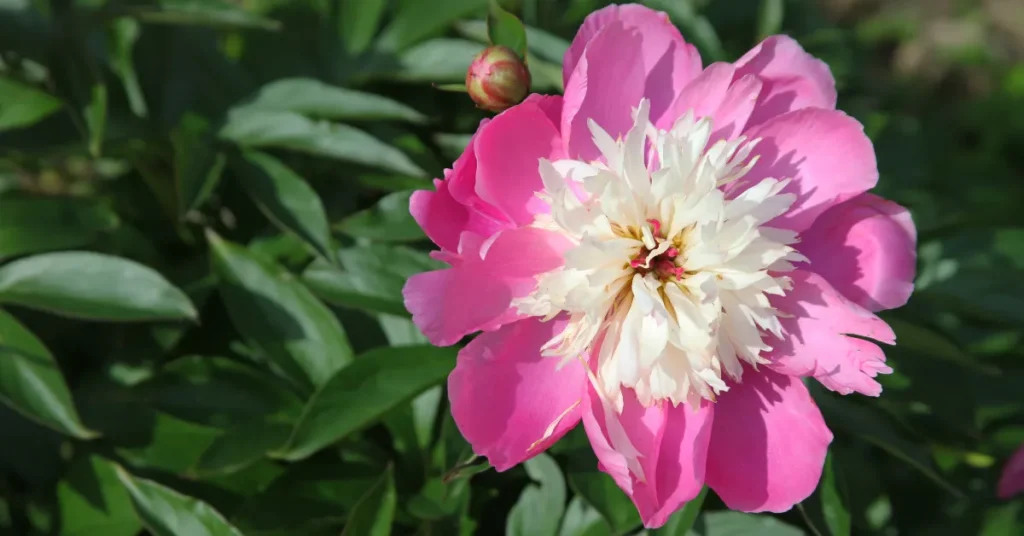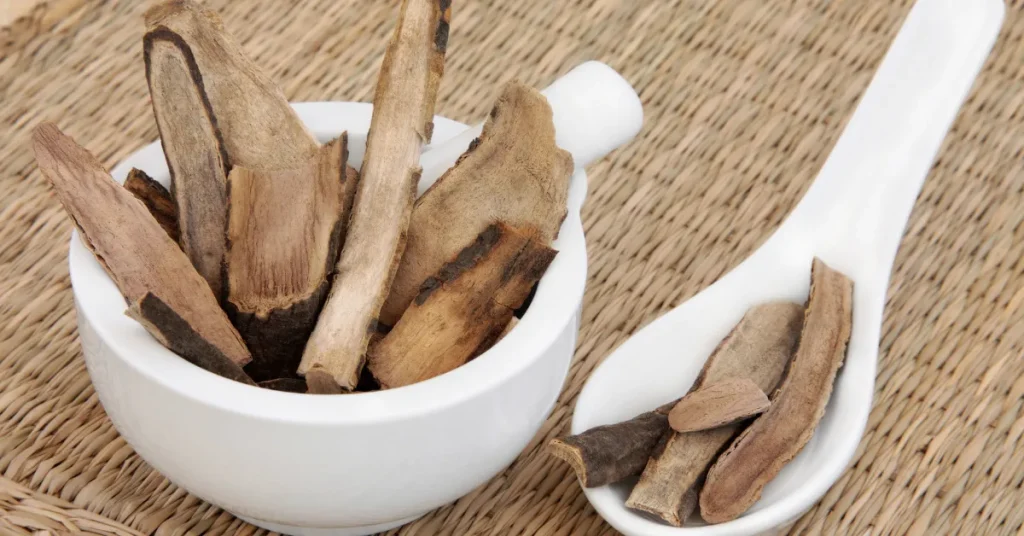Peony roots typically extend up to 24 inches deep into the soil. Their extensive root systems help anchor the plant and access deep moisture.
Peonies, the lush, vibrant perennials beloved by gardeners for their stunning blooms, have a robust root system that delves deep into the earth.
These roots not only stabilize the plant but also seek out necessary moisture and nutrients, playing a crucial role in the peony’s growth and bloom cycle.
A healthy peony’s root depth can influence everything from the plant’s drought tolerance to its resilience against harsh winters. Gardeners appreciate these characteristics, as they make peonies a low-maintenance yet show-stopping addition to any landscape.
Knowing the extent of peony roots helps in planning garden layouts and ensuring that plants have enough space to flourish without interference. Proper attention to planting depth can lead to a garden full of stunning peony flowers that will return year after year.

The Nature Of Peony Roots
A garden’s treasure, peonies, thrives through their intricate root systems. Understanding peony roots is key to nurturing these blooms.
Root Depth Variations
Not all peony roots reach the same depth. Soil type and the peony’s age play a big role.
- Young plants may have shallower roots.
- Mature peonies dive deeper, often up to 24 inches.
Characteristics Of Healthy Roots
Healthy peony roots are vital for the plant’s success. They should show these signs:
| Characteristic | Description |
| Firmness | They feel sturdy and not soft. |
| Color | A rich, creamy white is a good sign. |
| Hydration | They’re moist but not waterlogged. |
| Size | Thick and robust, much like carrots. |
Planting Peonies: Depth Matters

The secret to blossoming peonies begins underground. Getting the depth right when planting peonies is crucial for their survival and bloom. Peony roots need careful consideration. This section outlines how deep to plant those roots!
Ideal Planting Guidelines
Follow these steps for successful peony planting:
- Dig a hole large enough to accommodate the roots without bending.
- Ensure the top of the root sits no more than 2 inches below the soil surface.
- For colder climates, an extra inch may be necessary to protect the roots.
- Nourish the plant with compost and well-drained soil.
Common Planting Mistakes
Avoid these pitfalls to ensure your peonies thrive:
| Mistake | Impact |
| Too Deep | Limits blooming |
| Too Shallow | Roots may dry out |
| Ignored Soil Prep | Stunts growth |
Factors Influencing Root Depth
Understanding how deep peony roots stretch involves a few key factors. Peony enthusiasts know these factors affect their garden’s success. Let’s delve into what makes peony roots thrive at various depths.
Soil Conditions
Healthy peony growth starts with soil quality. Soil texture and structure play a huge role. Peonies prefer well-drained soil that allows roots to penetrate deeply. Compact soil can stunt root growth.
It means roots may only delve a few inches deep. On the other hand, loamy and sandy soils encourage roots to go deeper in search of moisture and nutrients, sometimes as deep as 24 inches.
Peony Varieties
Not all peonies have the same root depth needs. There are herbaceous peonies and tree peonies. Herbaceous types have a fibrous root system spreading horizontally at a moderate depth.
Tree peonies have woody roots that anchor deeply into the soil. This can vary between 18-24 inches deep or more, depending on the variety.
Climate And Geography
Where you live makes a difference in root depth. In colder climates, deeper roots protect peonies from frost. Regions with wet winters require good drainage to prevent root rot.
This encourages peonies to grow their roots deeper. Lastly, areas with strong winds might cause peonies to anchor deeper for stability.
- Colder regions: Deeper roots for frost protection
- Wet winters: Good drainage promotes deeper roots
- Strong winds: Roots anchor deeply for stability
Impacts Of Root Depth
Peony plants showcase lush blooms that captivate gardeners. Their root depth is key to thriving growth. Deep roots support the plant’s needs throughout the year. Let’s explore the impact of peony root depth on their overall well-being.
Growth And Blooming
Proper root growth guarantees spectacular peony flowers. Peony roots prefer to be planted at a depth of about 2 inches. This depth protects them from the cold. Roots run deep to store food and energy.
Deep and healthy roots result in abundant blooms in the spring. Poor root depth can lead to weak stems and fewer flowers.
Survival Through Seasons
Changing seasons test peonies’ survival. Deep roots help peonies withstand the seasons. They extend into the soil up to 24 inches. This anchors the plant against harsh winds.
In winter, they go dormant and store nutrients in their deep roots. Come spring, these nutrients support new growth. Without adequate depth, peonies are less likely to endure cold winters and return the following year.
Caring For Peony Roots
Caring for peony roots is essential to ensure these stunning flowers thrive.
Peony roots can grow quite deep, stabilizing the plant and providing nutrients and moisture.
Proper care includes attention to watering, soil nutrition, and protection from pests.
Focus on these practices ensures peonies remain healthy and vibrant year after year.
Watering Practices
Peonies prefer consistent moisture, especially during the growing season.
It’s crucial to water them deeply, allowing the water to reach the full depth of the roots.
- Regular watering is vital when rainfall is scarce.
- Do not overwater to prevent root rot.
- Use mulch to retain soil moisture and regulate temperature.
Soil Nutrition Management
Nutrient-rich soil is the foundation of a healthy peony plant.
Balanced soil promotes root growth and flower production.
| Soil Nutrient | Benefit | Source |
| Compost | Improves texture | Organic matter |
| Phosphorus | Stimulates roots | Bone meal |
| Potassium | Boosts health | Potash |
Test soil every few years to adjust nutrient levels as needed.
Protecting Roots From Pests
Healthy roots can fall prey to pests. Take steps to safeguard them.
- Examine plants regularly for signs of trouble.
- Use natural predators like ladybugs to control pest populations.
- Apply appropriate insecticides when an infestation occurs.
Keep garden clean by removing debris to minimize pest habitat.
Unearthing Peonies: When And How

Welcome to our deep dive into the world of peony roots! Garden enthusiasts often marvel at the beauty of peonies. Their vibrant hues and lush fullness are a sight to behold.
But, what lies beneath these exquisite blooms? Today, we unearth peonies to explore the best practices for when and how to transplant these garden gems, ensuring their prosperity for years to come.
Optimal Times To Transplant
To ensure the successful relocation of peonies, timing is key.
- Fall is the best season to move peonies.
- They are dormant from October to November, making it a perfect window.
- Avoid hot weather, as it increases stress on the plant.
Techniques For Minimizing Root Damage
Peonies have delicate root systems that require careful handling.
| Step | Action |
| 1 | Water peonies 1-2 days before transplanting. |
| 2 | Use a sharp shovel to dig around the peony. |
| 3 | Go deep to avoid cutting roots. |
| 4 | Gently lift the root ball from the soil. |
| 5 | Clean soil off roots to inspect for damage. |
| 6 | Trim any broken roots with sterilized pruners. |
| 7 | Replant quickly to reduce root exposure. |
Remember to handle with care and give your peonies the best chance at a fresh start in their new location. These timeless beauties with their deep roots will reward your efforts with stunning blooms spring after spring.
FAQs About How Deep Are Peony Roots
What Depth Do Peony Roots Typically Reach?
Peony roots often extend up to 1 foot deep. This depth allows them to anchor well and access nutrients.
Can Peony Roots Cause Damage To Foundations?
Peony roots are not aggressive or invasive. They pose minimal risk to foundations compared to trees or shrubs with more vigorous roots.
How To Plant Peonies For Best Root Growth?
Plant peonies with their eyes (buds) 1-2 inches below the soil surface. This encourages strong root development and beautiful blooms.
Do Peonies Require Deep Soil For Planting?
Peonies thrive best in rich, deep, well-draining soil. Ensure the planting area allows for their roots to grow without obstruction.
Conclusion
Peony roots delve into the earth, a testament to their resilience and grace. With proper care, they can flourish in your garden for decades.
Remember, healthy roots are the key to vibrant blooms. Thank you for joining us on this underground journey, and may your peonies thrive year after year.
Resources:
1. https://extension.psu.edu/the-beloved-peony
